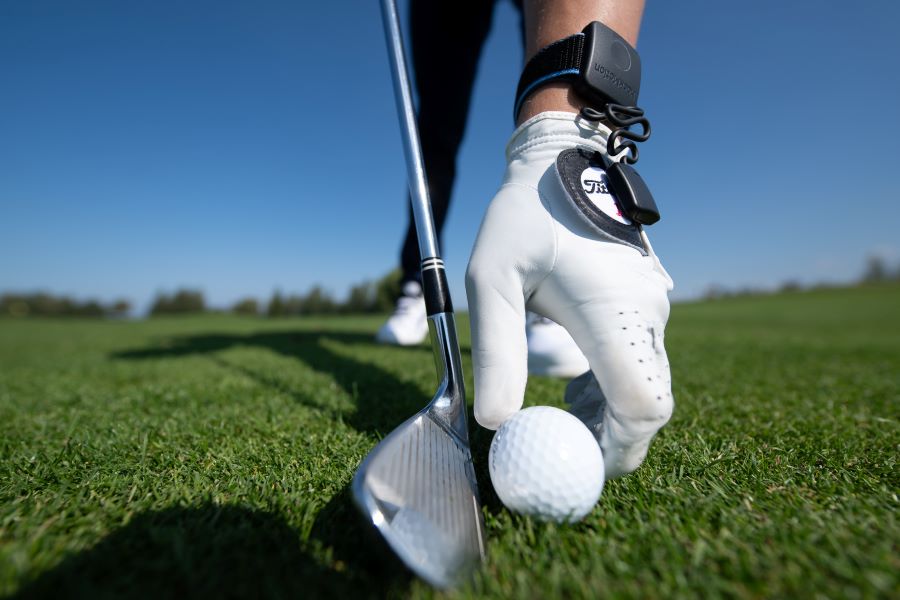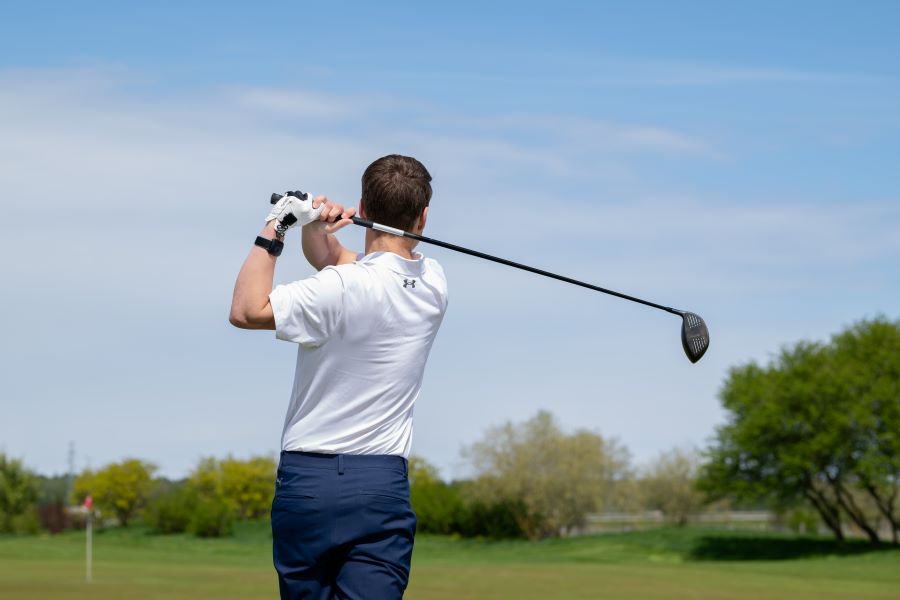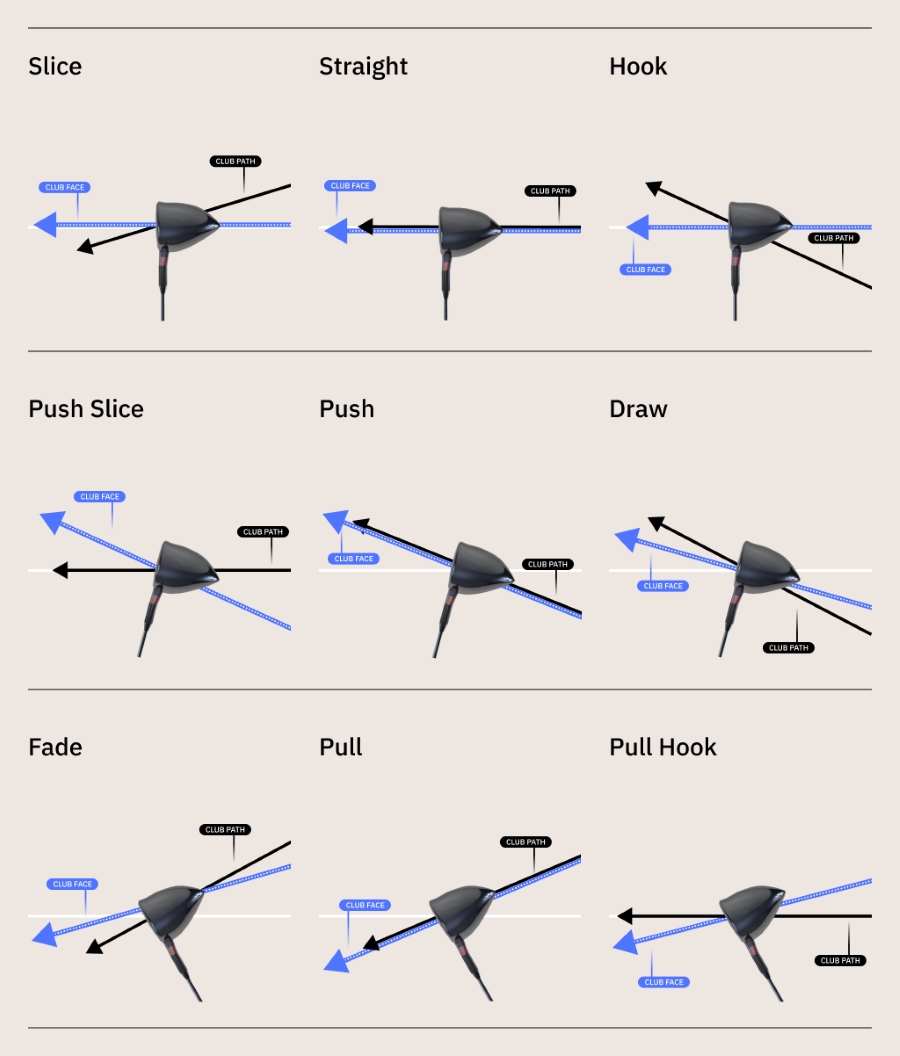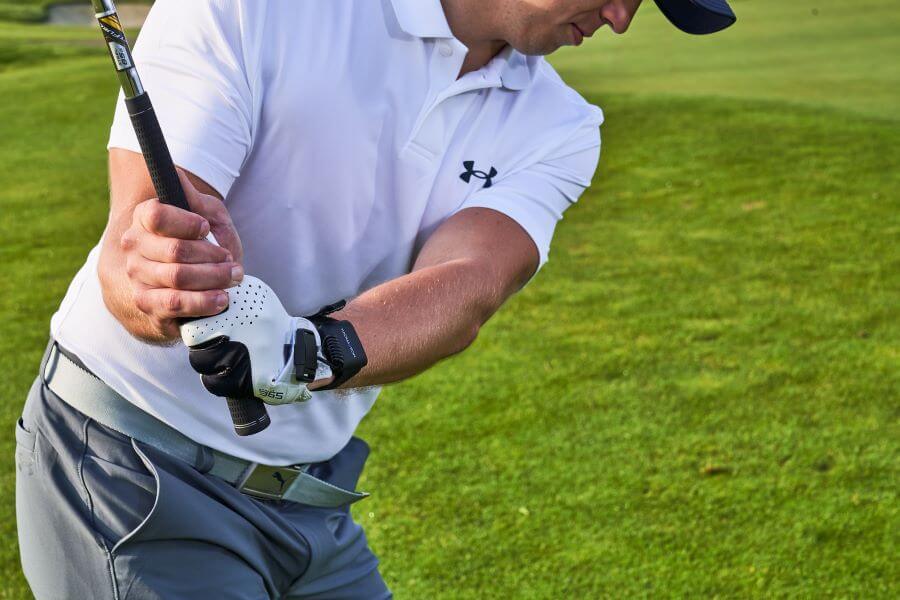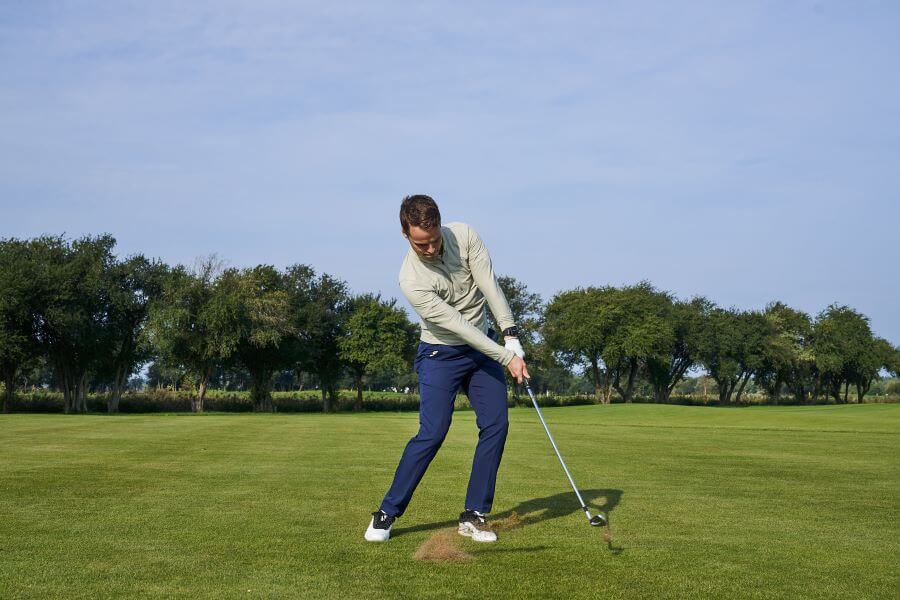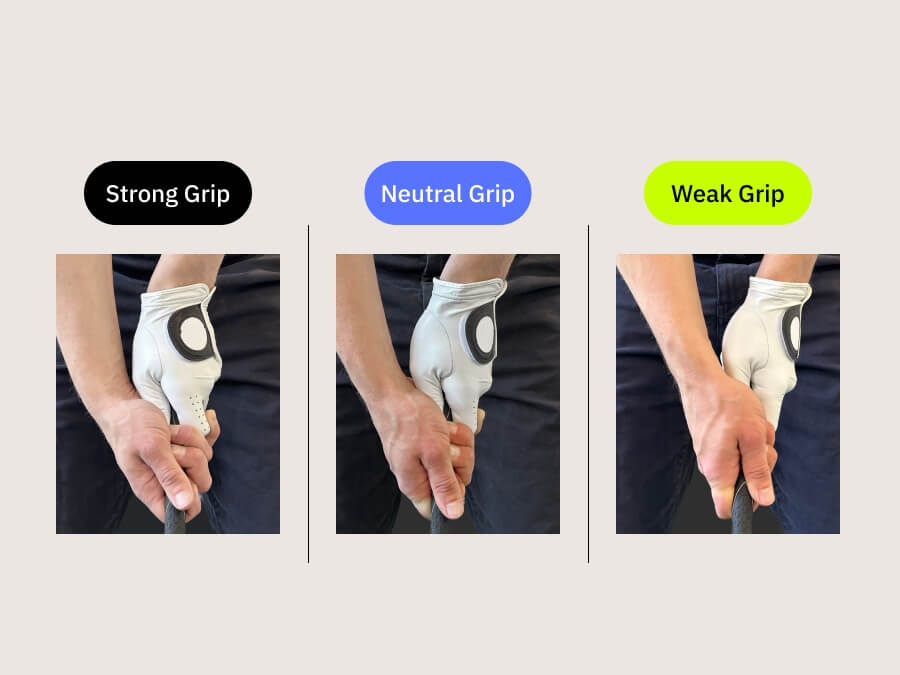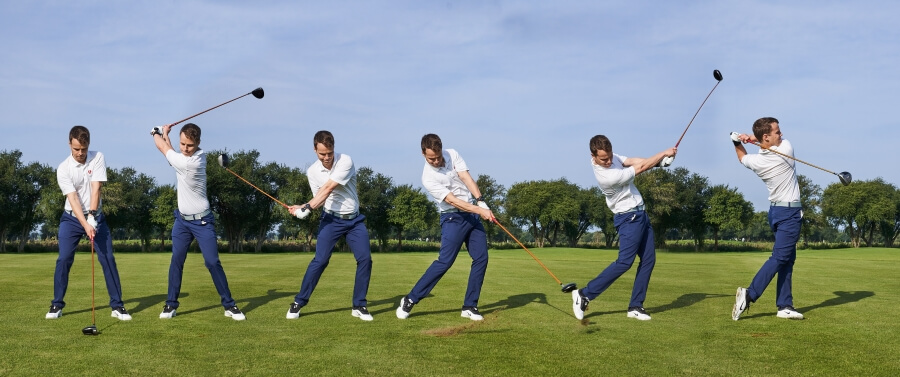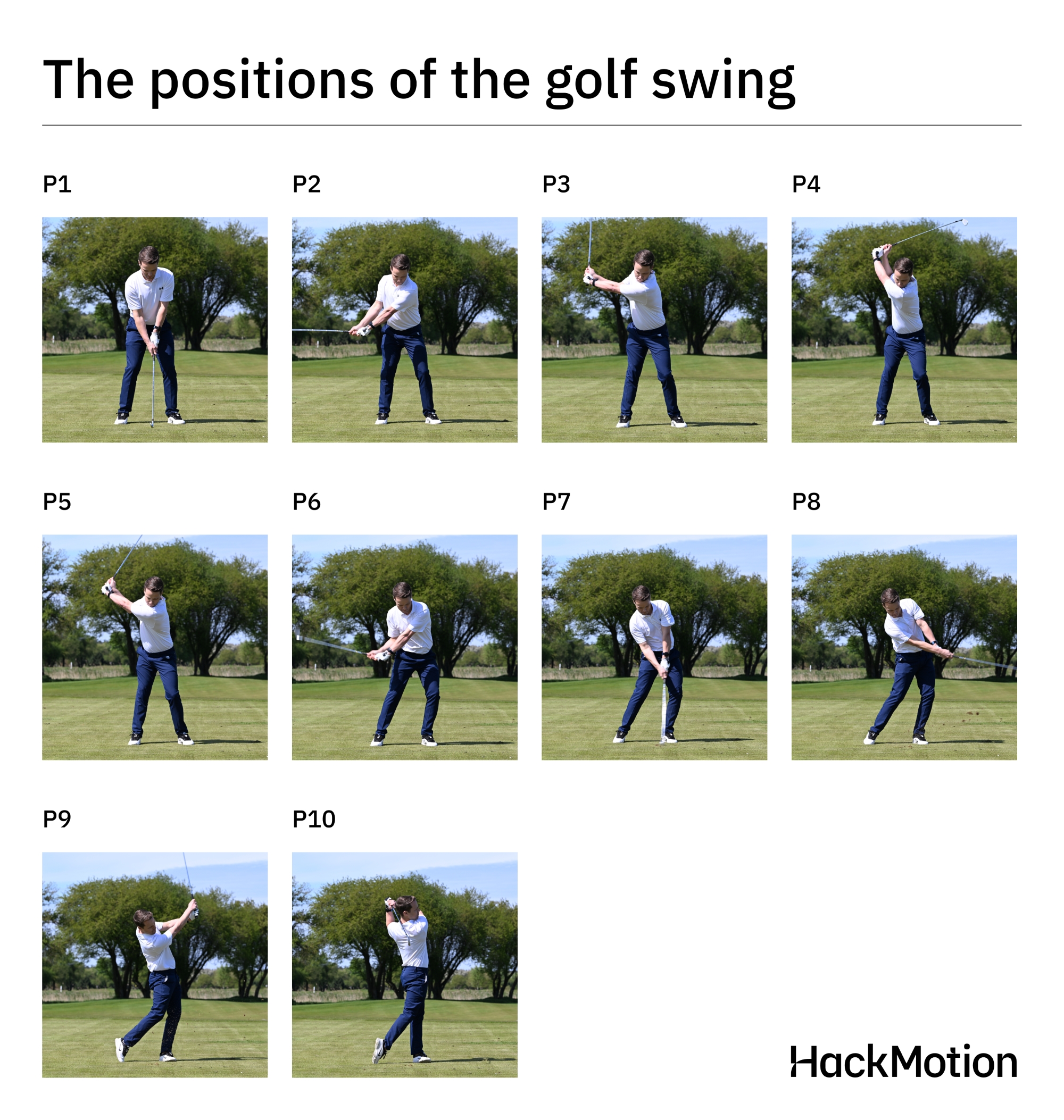9 Different Types of Golf Shots Explained (Why You Should Know Them All)
Hitting a golf ball straight is important. However, at some point, hitting golf shots straight will not be enough to help you score. Instead, you need to be able to move the golf ball flight to benefit the situation you are in on the course.
Whether it’s a pin tucked on the side of a green or a tree you have to work your way around, being able to hit a variety of different types of golf shots will benefit your scoring.
Let’s look at the different types of golf shots and what it takes to learn to control the golf ball.
Different Types of Golf Shots (Key Takeaways)
If you need to come back to this later to learn and understand all nine types of golf shots, here are a few bits of information you can take with you right now.
- The average golfer does not know nearly enough about how to control their golf ball; by learning more types of golf shots, you can get yourself out of difficult situations on the course.
- Always look for the least amount of change you need to make to hit a different type of golf shot; if all you need is a slight change in stance or grip, that is well worth it.
- Don’t get overly creative on the golf course; sometimes, hitting a straight shot to the center of the green is the best possible play.
- The wrist position in the golf swing is what controls the clubface at impact; clubface angle at impact will control your ball flight.
- If you know how to hit a slice or a hook intentionally, when you unexpectedly run into issues on the golf course, you should easily fix them.
- Understanding the position of your wrist at the top of your backswing and again at impact is the easiest way to gain control of the clubface angle.
9 Different Types of Golf Shots
High Fade Golf Shot
Many beginners naturally hit the high fade golf shot. The reason this happens is a lack of knowledge and understanding of what happens at impact.
When you want to intentionally hit a fade, you will need to make some adjustments to your stance and swing. The high fade begins its flight in the direction of the target to end to the right (to the left, in the case of left-handed golfers).
This type of shot is advantageous when looking to control the ball’s final destination, making it stop quickly due to spin. High fades make approach shots much easier. One of the easiest ways to do this is by turning your feet slightly to the left, perpendicular to your target.
And doing something similar with the hands, opening the right hand while taking a little pressure off it. All this while keeping the ball in the center of the stance.
The feeling you need to look for is cutting the ball across the impact line. It is essential to maintain balance and stability throughout the high fade and trust this slightly open clubface.
Jack Nicklaus was a great high fade player; some players go to the high fade as their standard ball flight.
High Draw Golf Shot
The high draw is a golf shot that begins in the direction of the target and then ends to the left (to the right, in the case of left-handed golfers).
Undoubtedly, this shot allows you to gain extra distance, although you risk losing ball control.
The easiest way to achieve a high draw is to place the ball closer to the left foot in the stance, closing the right hand over the left in the grip. The next step is to swing as usual.
Some golfers feel that a draw type shot is also the result of a slightly shallower golf swing.
The high draw golf shot is ideal off the tee and for long iron shots.
If you are looking to sling one on the green on a reachable par 5, the high draw golf shot is a great option to consider.
Hook
I think most golfers think about a hook as a negative.
However, if you are behind a tree and the hole is heading left, a hook shot is an awesome way to get around it and get back in play.
In addition, as I’ve said many times if you want to learn to fix a hook, learn how to hit a hook.
Hitting a hook is actually very easy: close your right hand on the grip and bring the ball close to your left foot in the stance. Then, make a well-pronounced backswing inward and your usual downswing.
The hook feels a little like you are wrapping the club around your body both on the backswing and the downswing.
For some golfers, a hook is a torment, a cry of lament. Losing control of a shot is the last thing you want to experience when playing golf.
The key is learning to hit one, so you can fix it on the course.
Slice
Of the nine types of golf shots that we go through, the slice is my least favorite.
The slice is a shot with a short flight and a turn to the right (for the right-handed player). The slice is produced by the face of the club being open when you hit the ball.
The more open the face is, the harder it is to control the shot. When the face is open to the path, the slice will just continue to turn with no hope of finding a fairway or a green. Most of the time, a slice is not an intentional shot. Instead, it’s hit as a mistake.
Many golf instructors will help you fix your slice by changing your setup and even strengthening your golf grip to make it easier to square the clubface. However, this still doesn’t address the root of the problem: too much extension in the lead wrist at impact.
When your lead wrist is too extended, it opens the clubface and introduces the slice.

How can you tell if lead wrist action is the reason behind your slice?
The HackMotion data will show you. HackMotion is one of the easiest ways to fix a slice and square your clubface. However, it’s not all that HackMotion does. Golfers who slice the ball often say they can’t even feel that the clubface is open. That’s normal!
When wearing the HackMotion, you will feel, see, and hear when your lead wrist is in the wrong position and you are heading for a slice. The great thing about this is that you can wear HackMotion when you hit actual shots.
Real-time data for everything from a pitching wedge to a 7 iron to a driver.
If you have ever worried about over-rotating, strengthening the grip too much, or even slowing your swing down in ways that could actually increase the chance of your slice, HackMotion will get you back on track.
It’s a simple slice fix.
Knockdown Golf Shot
Knockdown golf shots are one of my favorites. You will not believe how often you use this when playing on the course.
The knockdown is a helpful type of golf shot under windy conditions. In this type of shot, the aim is to keep the ball’s flight low.
To hit a great knockdown shot, put some weight on your left foot, keep the clubface square to closed, take a ¾ swing, and then keep the finish or follow through as low as you can.
Important: in most cases, it is best to use a lower lofted club every time you plan to hit an effective knockdown shot. If you use a nine iron or wedge, the ball will likely still get plenty of height and create issues with hitting a tree or other hazards.
Flop Golf Shot
What golfers can give up on the dream of being like Phil Mickelson around the greens.
Mickelson is a master of the flop shot.
The flop is a shot with a very lofted club (from pitch to lob wedge), which goes high and stops immediately after touching the green.
What should be taken into account when performing this shot? It is crucial to know that this shot requires a lot of practice.
Mickelson suggests the following tips for making a good and efficient flop shot:
- Open the clubface before placing your hands on the grip.
- Put your hands slightly lower, closer to the club’s face.
- Open your legs wide in the stance.
- Place the ball near the tip of the left foot.
- Make a slow yet complete and consistent swing.
- Do not take your eyes off the ball for anything in the world.
Flop shots are not going to be your go-to shot around the green, but having this shot in your bag for occasional use is beneficial.
Bump and Run Golf Shot
Bump and run shots require quite a bit less wrist action in the golf swing.
This makes the bump and runs more attainable, and a better overall golf shot for the majority of amateurs.
This golf shot consists of hitting the ball low. It is used to get out of the trees and, especially, to get closer to the pin.
It can be performed with any club in your bag.
Bump, and runs are also great if you are just short of the green and need to run a ball up to the pin.
To hit a great bump and run shot, choke down on the club, have a slightly narrow stance, and make a more controlled swing, usually a half or quarter-type golf swing.
Punch Golf Shot
The punch shot is a bit of the bump and run and the knockdown golf shot combined.
For me, it is the right shot to get out of trouble and get the ball back on the fairway (and maybe on the green).
The best way to do this shot is to shorten your swing, bring your legs together, and focus on hitting down and through the golf ball.
Sand Golf Shots
For many golfers, laying in a bunker is also like a nightmare.
Most golfers don’t understand that hitting sand shots is actually quite simple. It’s not difficult to get the ball up and down out of a bunker if you have the proper technique.
Sand shots can generate a lot of spin, allowing players to be more aggressive.
In the bunker, take an open stance, make sure your feet are buried in a bit, open the face of the club and make sure you accelerate through the golf ball.
With these simple tips and a proper stance, you will find it easier to hit the ball from the bunker.
Now: this is a shot that requires a lot of practice, so I recommend taking your time at the driving range until you find your best position and swing to do it.
How to Hit Different Types of Golf Shots
Now that you better understand the different types of golf shots you can play, it’s time to start learning them. Do you need to know how to play all of these? Not really.
However, it could not hurt you to learn.
Setup/Stance
Start by checking your stance to see if you are set up square to hit a straight shot. If you want to hit a little fade, open the stance a little, and for a draw, close it.
Making minor adjustments to the setup and stance (ball position, weight distribution) can make it much easier to hit different types of golf shots.
Grip
Your grip is a major factor when it comes to the types of golf shots you may want to hit. Make sure you have a stronger grip if you want to close the clubface more and a weaker grip if you need to keep it open a bit.
In addition, use the HackMotion to help you create a consistent grip on the golf club. Every golfer has a different initial grip position because of how their hands connect to their wrists.
As important as your grip is, taking a consistent grip on the club each time is even more important.
Wrist Position at the Top of the Backswing
Your wrist position will determine the angle of the clubface at impact.
However, you can’t fix your wrist position right before you get to the ball. The best indicator of what will happen at impact happens at the top of the backswing.
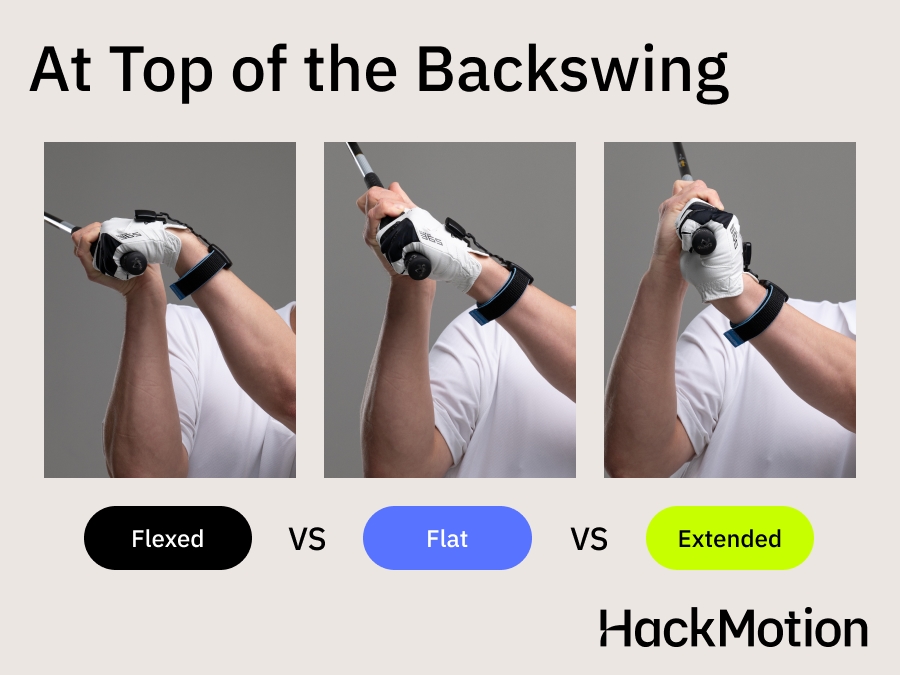
We see golfers like Dustin Johnson and Collin Morikawa with a flexed wrist position at the top of their swing. They are setting themselves up to have a square and sometimes slightly closed clubface at impact.
The chance of hitting a slice from here is very low.
Most amateur players, on the other hand, get to a more upright position at the top of the backswing with an extended lead wrist. It takes a lot of work from this position to square the face and hit a ball straight.
If you want to hit a straight golf shot, or even just a fade or a draw, it’s important to use HackMotion to evaluate your wrist position at the top. This position can then be compared to that of the professionals to see what changes need to be made.
HackMotion also allows you to tag shots and practice sessions. When trying to learn to hit a draw, save that session and go back and analyze the data to see what you are doing right and wrong.

Wrist Position at Impact
Finally, wrist position at impact is what ultimately decides the flight of the golf shot you hit. The best players in the world have flat to slightly flexed lead wrists at impact.
This position encourages a better ball strike, proper spin rates, more distance, and a straighter overall flight. Wrist position at impact will vary a bit depending on the club in your hand (driver, wedge, iron).
However, after analyzing over 1,000,000 golf swings, we know the best players do not have extension in their lead wrists at impact.
Work on getting to a more flexed lead wrist position using the audio feedback feature that HackMotion offers. Golfers are fixing their slices and controlling their golf shots in record time without having to do anything but tweak their wrist angle.
FAQs
Here are a few of the most commonly asked questions about the different types of golf shots.
What is the difference between a fade and a draw?
For a right-handed player, a draw is a shot that starts straight and turns slightly left. A fade is a shot that starts straight and turns slightly right.
The draw and the fade are controlled shots typically hit intentionally by good ball strikers.
When should I use a pitch shot versus a chip shot?
When you have an obstacle in front of you that you must clear, the pitch shot is a better solution. It has a higher loft, better spin, and more carry. Chip shots are for shots that are kept lower to the ground where a little more roll is needed.
What is the key to hitting a solid iron shot?
To hit a solid iron shot, you will need the ball positioned properly in your stance, a clubface that is square at impact, a flexed lead wrist position, and a body that is rotating through towards the target with weight on the lead foot.
It sounds like a lot, but with the help of tools like HackMotion, iron shots are much easier to pull off.
Final Thoughts
Most amateur players are missing out on the secret that all professional golfers know. If you want to control your golf shots, you must perfect your wrist angles in your golf swing.
When you watch professionals play, you can see that they are hitting different golf shots. Even with just one club in their hand, they can hit high and low shots as well as left and right.
If you want to learn how to do this quickly and with precision, invest in a HackMotion and play better golf.





